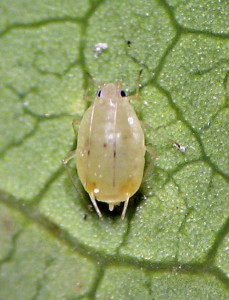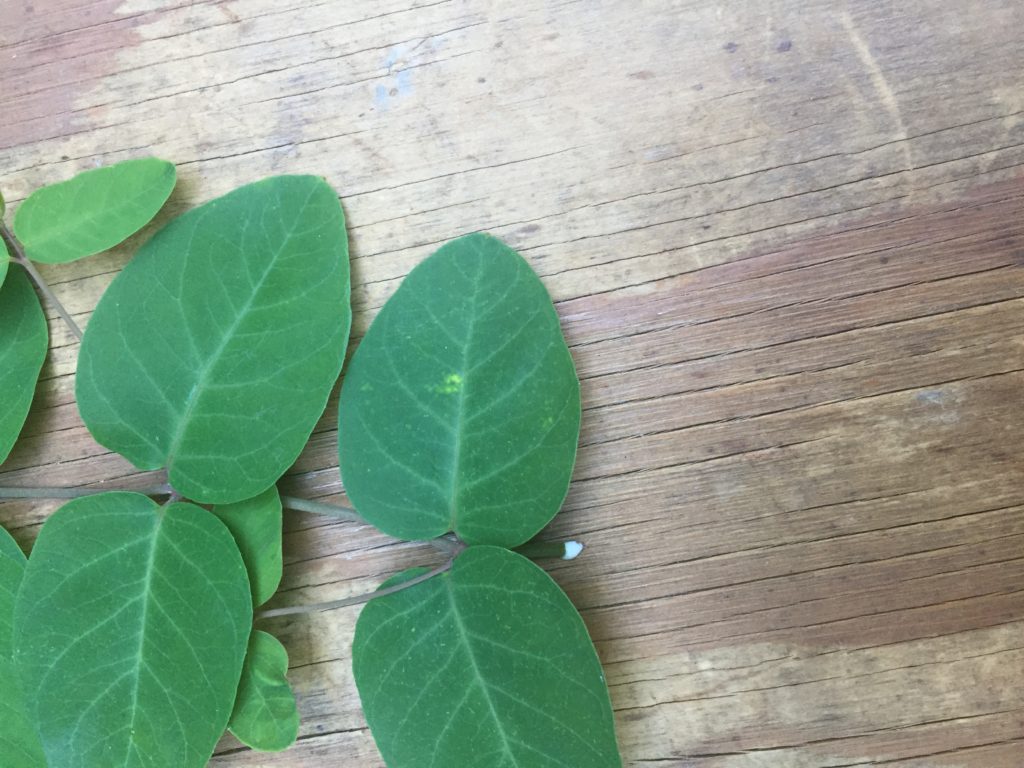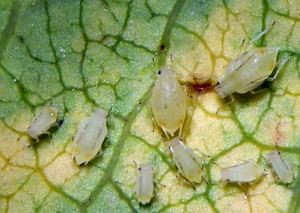
Abstrusomyzus Jensen & Stoetzel
This page updated: December 2024.
So this is a genus that I named back in my postdoc days at the U.S. National Museum collection in Beltsville, Maryland. Manya Stoetzel was my supervisor and mentor in those days, and gave me more support and kindness through grad school and postdoc than I perhaps deserved. In the days of this Abstrusomyzus work, she gave me latitude to work on this relatively obscure group, probably because I had a lot of material and a strong case for a new genus even before I finished my Ph.D. Plus, A. phloxae appears to be an unusually polyphagous species, a characteristic worth knowing about from an agricultural perspective.
Jensen, A.S. and M.B. Stoetzel. 1999. An examination of the North American aphid species currently placed in Ovatus van der Goot (Hemiptera: Aphididae) with the description of a new genus. Proceedings of the Entomological Society of Washington 101: 39-56.
In 2013 I discovered the sexual cycle of a species of Abstrusomyzus on roots and runners of Achillea millefolium near Boise, Idaho. I have identified the species as A. leucocrini, but I am starting to question the species boundaries that I wrote about when describing the genus.
Twice now I’ve been contacted to help identify an Abstrusomyzus on Cannabis (marijuana). See below for a little more information.
Abstrusomyzus leucocrinae (Gillette & Palmer)
This species has been a mystery to me since before my 1999 paper on this genus. This is what I wrote about it back then, “This species was described from several collections made by L.C. Bragg from Fort Collins, Colorado, in May of 1916. The aphids were found on Leucocrinum montanum, a small herb of the Liliaceae. We know of no other collections of this aphid from Leucocrinum. There are a few individual alate viviparae found in traps and on various plants that seem to be this species, but lack of good host plant records makes any deductions about the biology of this species difficult. The presence of many apterous and alate viviparae on an herb (Leucocrinum) in May suggests a monoecious life cycle. Further collecting will be needed to determine whether this species is monophagous on Leucocrinum, or feeds on
other plants as well.”
Since then I have identified this species only 4 times, all collected from the below ground parts of Achillea millefolium in more or less natural systems. These included apterae, oviparae, and apterous males. I have never been able to look for this aphid on Leucocrinum in Colorado, but when this plant genus has been encountered elsewhere (especially southeastern Oregon), no aphids were found. I cannot be sure that what I find on Achillea is the same species as the populations described as A. leucocrini from Leucocrinum, but they fit the morphological features reasonably well.
My samples of this species are from Washington, Oregon, Idaho, and Colorado.

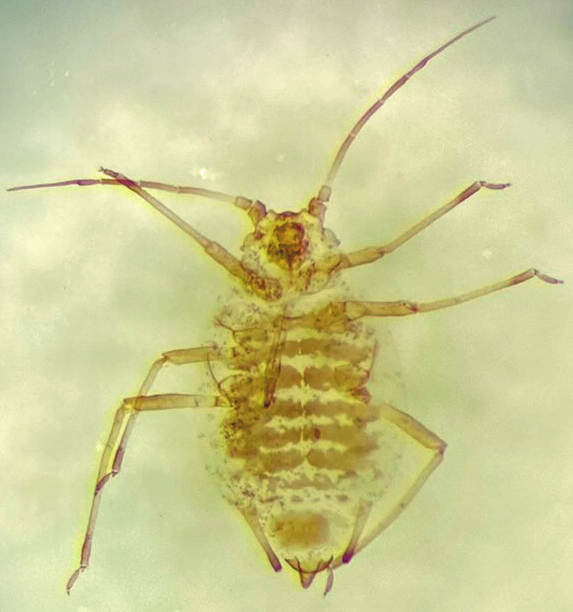
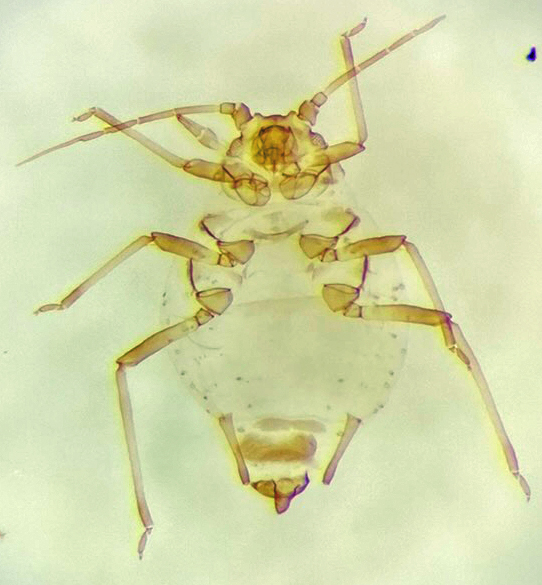
Abstrusomyzus phloxae (Sampson)
This is apparently a polyphagous species that is distributed across much of North America, but seems to be only locally common. One such area was the Willamette Valley and surroundings in Oregon back in the 1990s. This was the place and time that I discovered the species’ polyphagy.
I have collected it on, or seen samples from, many different plants including,
- Apocynaceae
- Apocynum androsaemifolium
- Apocynum sp.
- Asteraceae
- Achillea sp.
- Agoseris sp.
- Centaurea sp.
- Brassicaceae
- Capsella bursa-pastoris
- Cannabaceae
- Cannabis
- Caryophyllaceae
- Cerastium vulgatum
- Stellaria crispa
- Cyperaceae
- Carex densa
- Fabaceae
- Trifolium sp
- Hydrophyllaceae
- Phacelia nemoralis
- Liliaceae
- “Lilies”
- Onagraceae
- Epilobium
- Plantaginaceae
- Plantago major
- Polygonaceae
- Polygonum paronychia
- Ranunculaceae
- Ranunculus sp.
- Polemoniaceae
- Phlox subulata
- Rubiaceae
- Galium sp.
- Violaceae
- Viola sp.
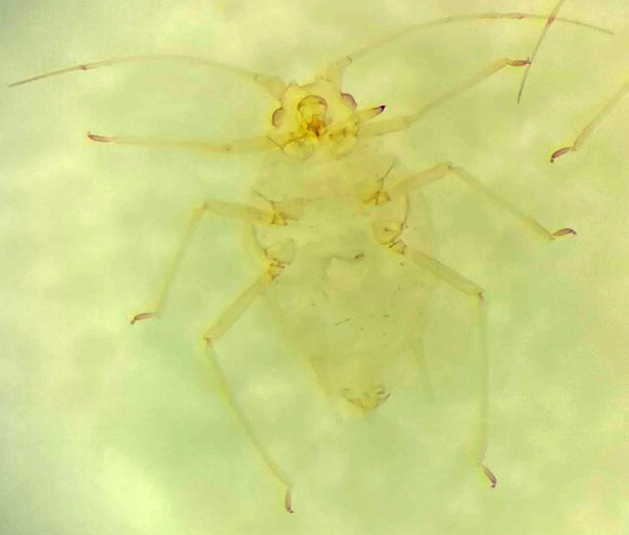
At the time I considered this to be one species, and it may in fact be only one. However, since that paper in 1999 I have collected for many hours in the western U.S. and the most common host I get this species on is Apocynum. On this host, the aphids live on the underside of the leaves and cause a pale discoloration visible from above. This is rather different from how this species lives on many other plants, i.e. on the basal rosette leaves that are adjacent to the ground. In 2018 I discovered yet another difference: alate males and oviparae living together on the undersides of typically discolored leaves. This seems to indicate a holocyle on this plant; collection of a fundatrix would seal the deal. Despite extensive searching in and near the location of my 2018 finds of sexuales, I was never able to recover a fundatrix from Apocynum in Oregon. Alas, since moving to Colorado in 2021 I have far less access to members of Abstrusomyzus.
In 2018 I was twice contacted to help identify A. phloxae collected from Cannabis (marijuana). In one case it was found on Cannabis in an indoor grow facility in January. The other case it was from an outdoor grow operation in August. I have to chuckle a bit about this because when I wrote about this species back in 1999 I predicted that its polyphagous nature may lead to it being a crop pest some day. Funny that the first crop pest samples I’ve seen were from marijuana!

